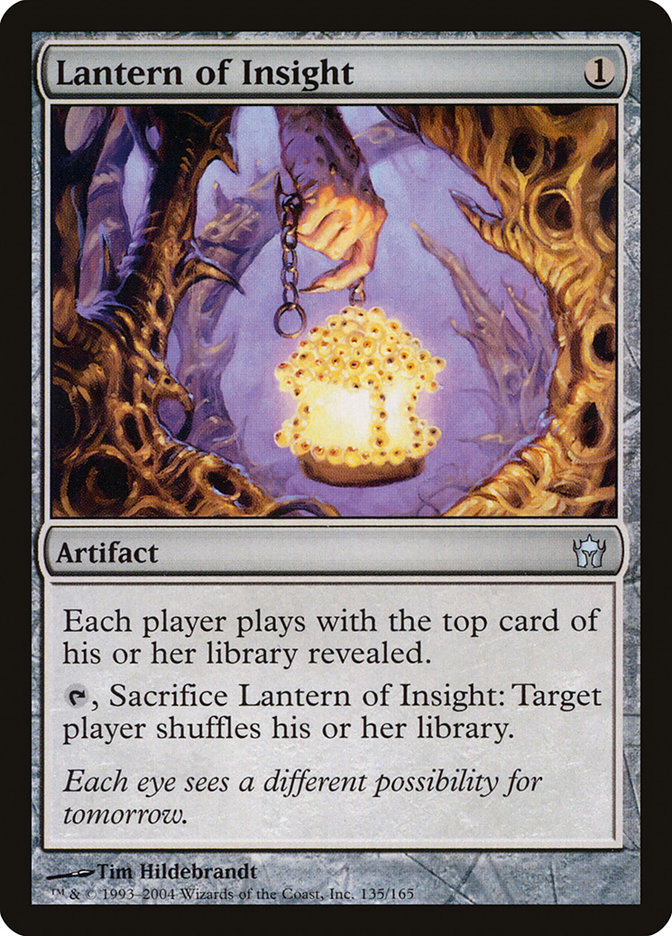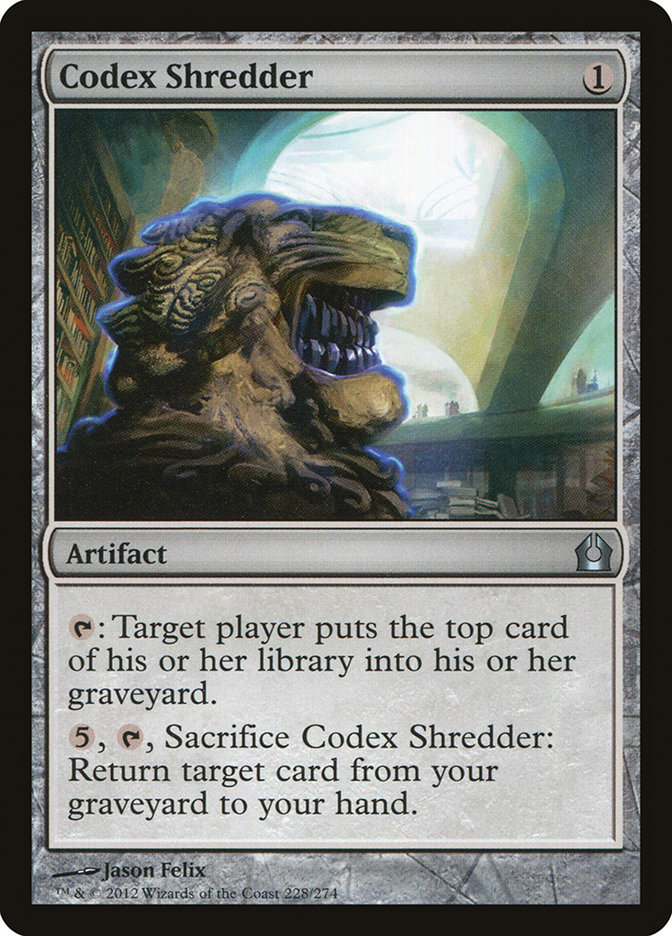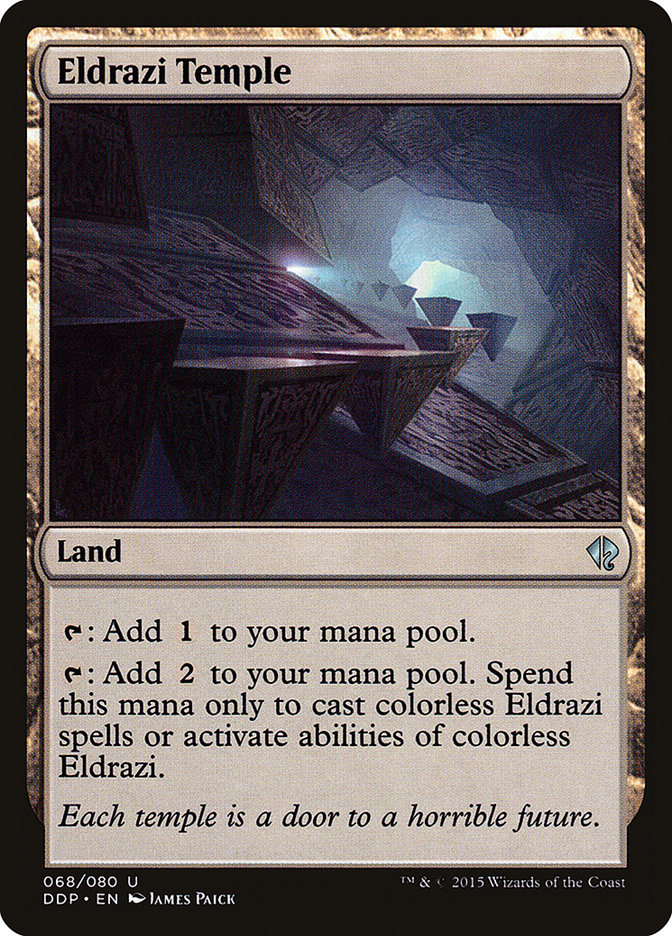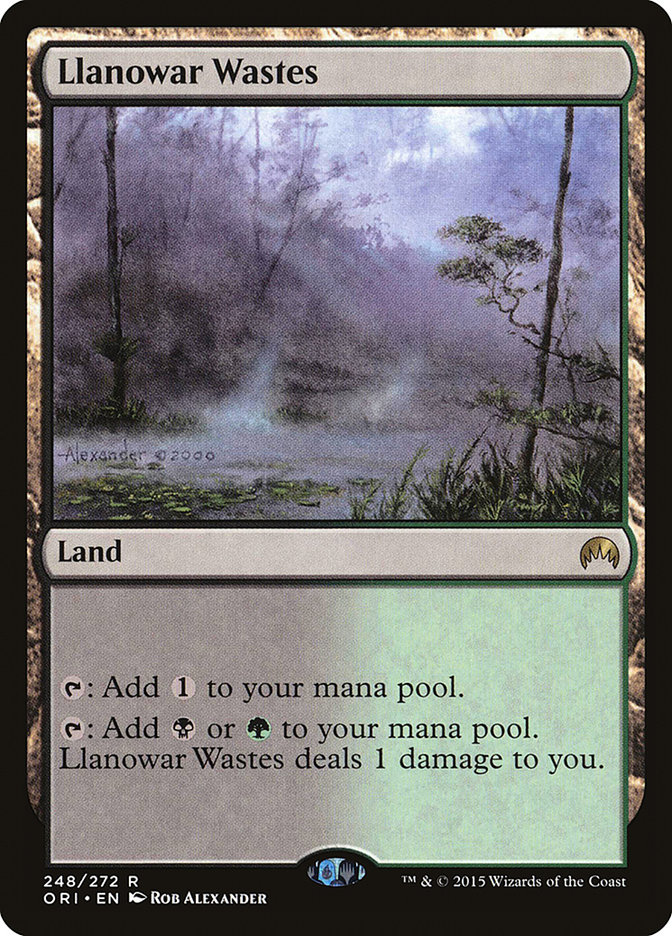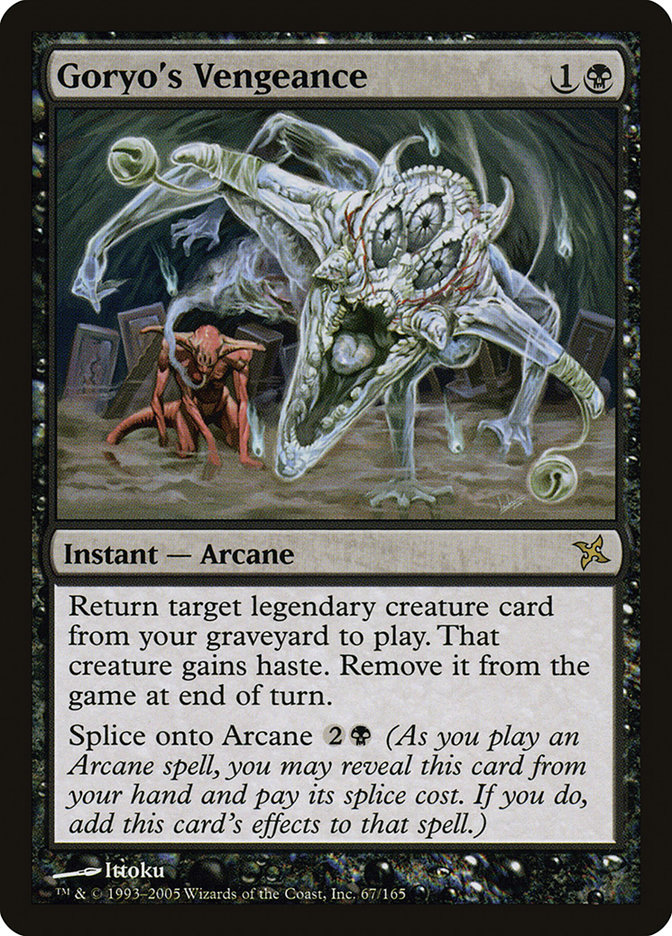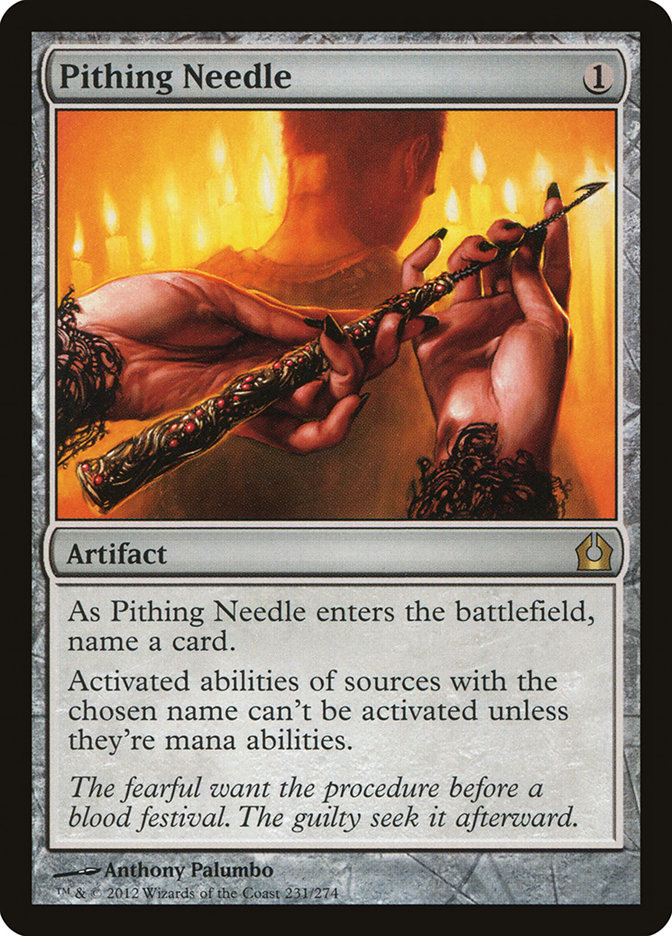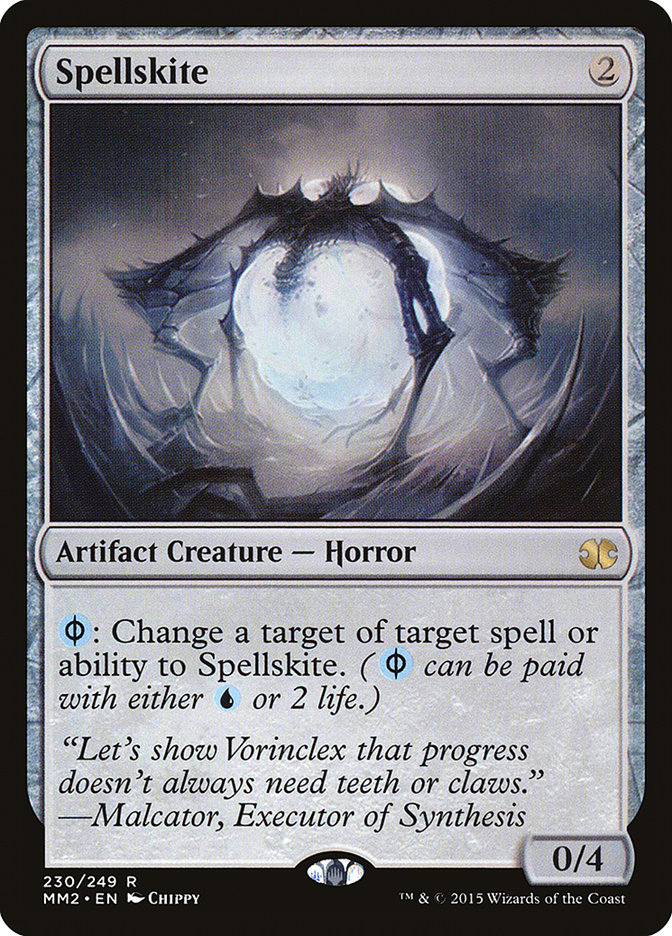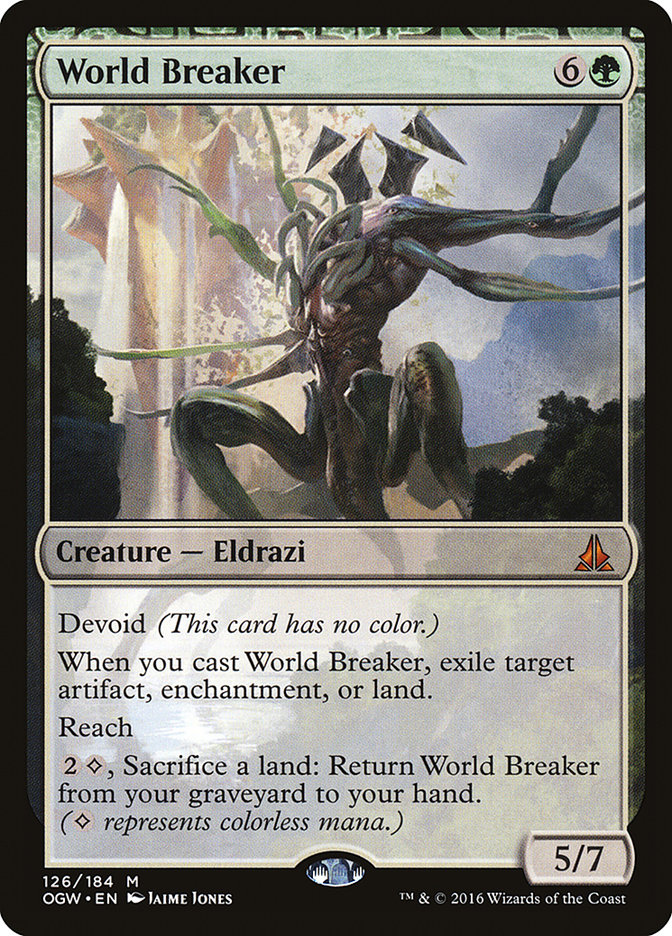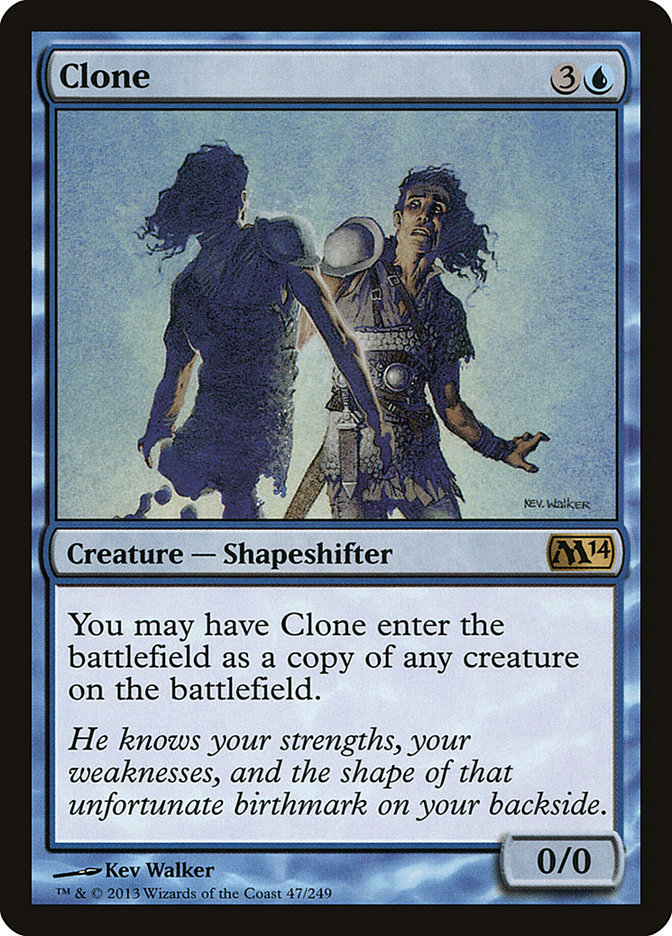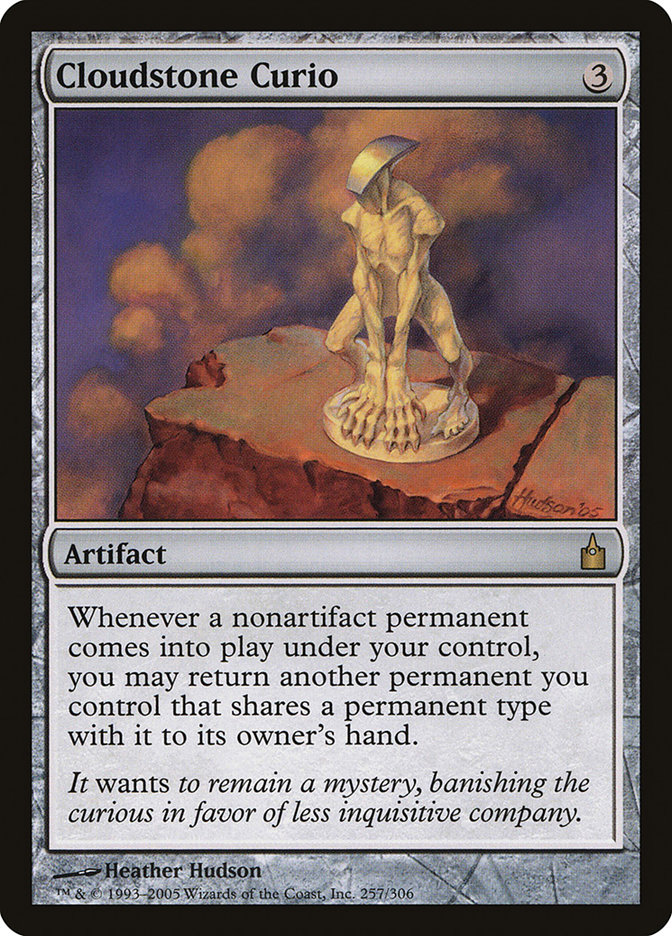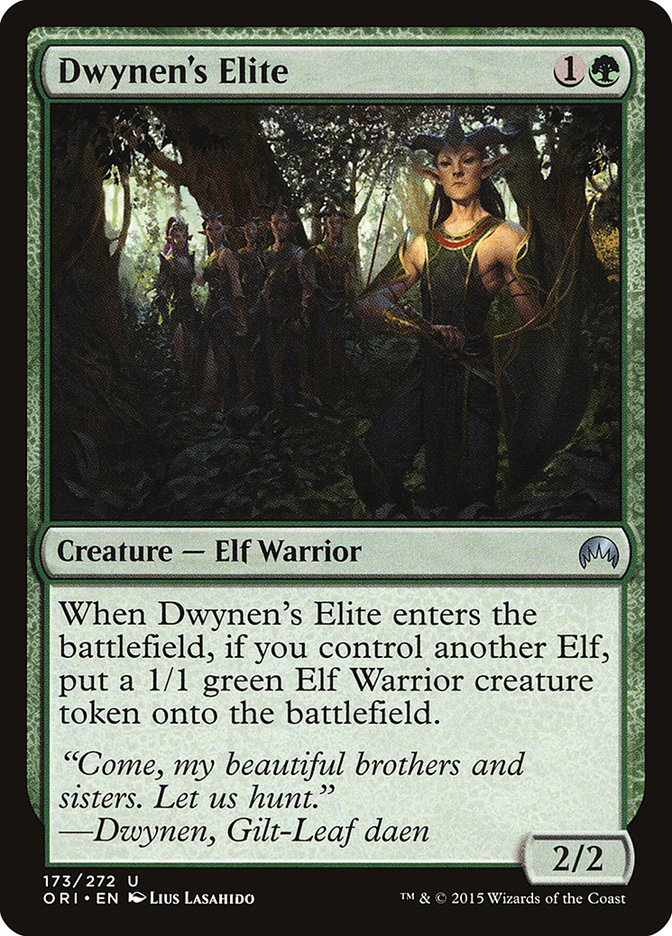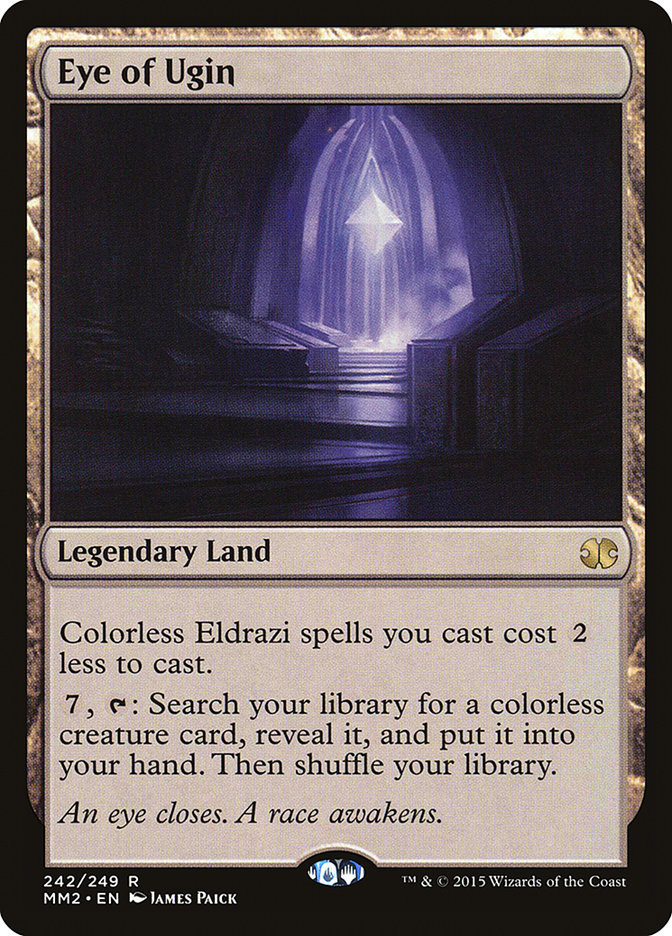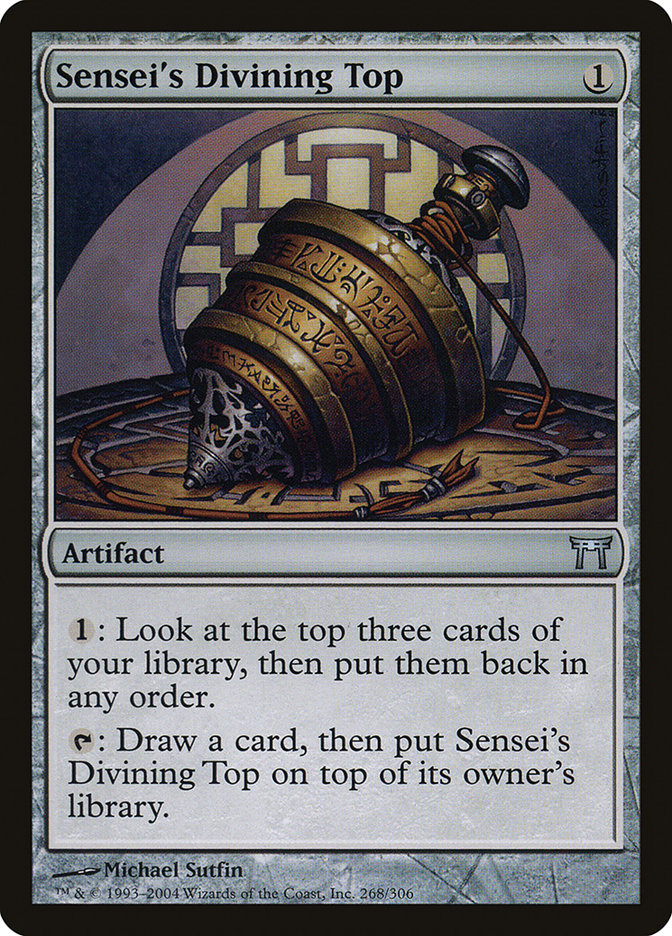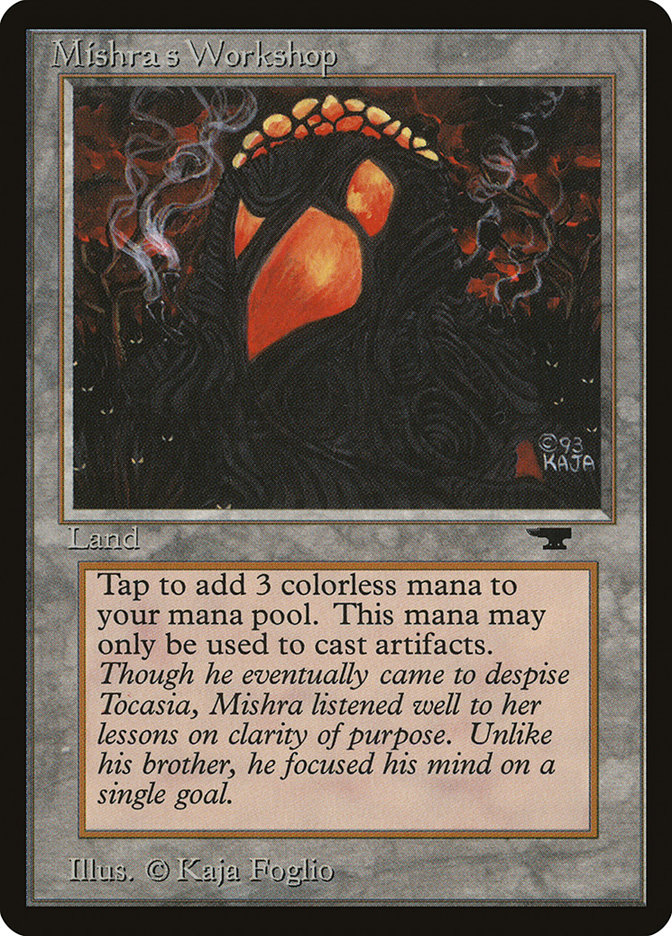This weekend, at Grand Prix: Detroit, I didn’t play Eldrazi. The choice, for me, came down to U/W Eldrazi, which I believe to be the best deck, or Lantern Control, which is the deck I’m most familiar with, and a deck I think is well-positioned. Ultimately, the decision didn’t feel very close.
It’s rare that one gets to play a deck has broken as Eldrazi in Modern is right now, and despite Eldrazi being a target, the community at large certainly hasn’t figured out how to beat it, as the GPs this weekend thoroughly proved. However, while I was confident I’d generally be a favorite with UW Eldrazi, I had no idea how I’d win the tournament.
Sure, I could just win almost all of my matches, but I had no reason to believe that would happen. While I might play Magic better than an average opponent at a GP, I had no reason to believe I’d play the U/W Eldrazi mirror better than someone else who’d been playing it for more than a week, and I didn’t really have any special tech that I thought would give me a large edge.
Now, when you know a deck to be the best deck, you should almost always play it. You’ll still get a pretty big edge just because most people still won’t play it for various reasons, but in this case, I felt like the circumstances were pretty exceptional. First of all, my goals are very specific, and while I’m always very suspicious of claims that a deck might be more likely to win a tournament than another deck despite having a lower win percentage against the field, this was a very extreme circumstance. Allow me to explain both points.
First, many players have goals like “make Day 2,” “win as many matches as possible,” “qualify for the Pro Tour,” or “maximize my expected value.” My goal is “win as many matches in the Top 8 as possible.” In some extreme circumstances, the EV calculation for various decks can change, depending on whether you consider an 11-4 finish to be substantively better than a 4-4 finish.
Most often, you can choose a deck and look at the metagame and say, “This deck wins 55% against deck A, 50% against deck B, and 40% against deck C. Deck A is 60% of the field, deck B is 20% of the field, and deck C is 20% of the field; therefore, I’ll win 55*.6+50*.2+40*.2=51% of the time.” However, if, in this example, deck A has a 10% matchup against decks B and C (don’t ask me why so many people are playing deck A), then after ten rounds of play, deck A will represent a much smaller portion of the field, and your win percentage will drop in later rounds as a result, since you’ll stop playing against your best matchup as often.
Now, when there are 30 decks in the field and none of them will make up more than 10% of the tournament, it’s very hard to predict how a field will change throughout the tournament, so for the most part, you’re best off just working with the expected metagame going into the tournament, or, if you have good historical data about what’s represented in later rounds, using that if the metagame is similar to what it was in that data.
For this tournament, I correctly predicted that if I wanted to win, I’d have to beat a lot of Eldrazi decks to do it, and I think I have better chances of winning a match against Eldrazi with Lantern Control, which I believe to be favored in the matchup, than I do if I’m playing a mirror. On top of that, I had fears that some groups of players might actually find decks that were great against Eldrazi, as I thought might be the case with Elves, and if they did, they would rise to the top. From what I’d seen, Lantern Control seemed to have good matchups against all the decks people played to beat Eldrazi, so I liked what I expected the other factors of the tournament to do to my positioning.
If I’m being totally honest, all of that really was my thought process, and I do care a lot about winning the tournament, but, as I alluded to earlier, I don’t care that much about getting one of those famous “bread and butter” 11-4 finishes, as I’m trying to maximize my Pro Points at the end of the year, and I believe I’ll hit the cap on two-point finishes. Given that, my odds of reaching a finish that really matters to me are fairly low, so a large portion of my tournament equity is just in having fun playing the event.
When asked about my “style” in Magic, I say that I like to take as many actions as possible to accomplish as little as I can. I like durdling in the extreme, and, despite its reputation, I find Lantern Control incredibly fun to play, as it fits this description perfectly. Eldrazi is the polar opposite. You make very few plays, but they’re all high-impact, and you hope that doing a couple of big things fast will end the game before it really even starts. It’s nice to get to do sweet things with Eldrazi Displacer, but there are very few decks I’d like playing less than Eldrazi, ignoring its win percentage.
Anyway, I played a list that was very similar to my deck from the Pro Tour, but with a couple of changes:
Lands (17)
Spells (43)

The first change I think is a strict improvement: I cut a Mountain and a Llanowar Wastes for a Swamp and Grove of the Burnwillows. This keeps my number of sources of each color consistent but distributes them in a much better way. Because Abrupt Decay is my only gold card, it’s best to split green and black sources. It’s also the only card that I can’t cast with colorless mana and a Mox Opal, so having a basic Swamp or Forest allows me to cast it under Blood Moon with a Mox Opal.
Also, Grove of the Burnwillows is probably very slightly better than Taiga in this deck; I’ve never come close to killing someone with damage, and the most likely impact of giving my opponent life is that I can use it to prevent a player with Archangel of Thune from attacking me with a Noble Hierarch under Ensnaring Bridge, because the Archangel’s trigger is mandatory. On the other hand, paying life to Llanowar Wastes can be a real drawback, so minimizing painlands is nice.
I believe the only other change I made to the maindeck was cutting a Duress for a Thoughtseize. I anticipated less Burn in this event, and being able to Thoughtseize a Thought-Knot Seer or World Breaker (which you choose with Pithing Needle to keep it in the graveyard) to protect Ensnaring Bridge is critical in the Eldrazi matchup.
In the sideboard I replaced Kozilek’s Return with Pyroclasm, the second Surgical Extraction with the second Grafdigger’s Cage, Pithing Needle with Thoughtseize, and the second Sun Droplet with the third Spellskite.
I determined that Pyroclasm’s lower mana cost was just too important, since this deck has very few mana sources and is counting on using that card to buy time to play Ensnaring Bridge.
I’d played four Surgical Extractions in the 75 because I was worried that Tron would be very popular at the Pro Tour. I found the matchup to be relatively difficult, and Surgical Extraction was the most important card. Now that Tron basically doesn’t exist, this is no longer a concern and I can scale back down. Grafdigger’s Cage was a hedge against the possible popularity of Collected Company and Chord of Calling decks that also mitigated the increased exposure to Goryo’s Vengeance decks from cutting the Surgical Extraction.
The fourth Pithing Needle was also there more for Tron than anything else, though it’s also good against Affinity. While I had it, I found that against most decks, after sideboarding I’d still present exactly three Pithing Needles. It just felt like the number I wanted against the normal range of good things to name with Needle, and the fourth just felt like an inefficient use of a slot. Thoughtseize took its place because I realized that it was the single best card I could think of that wasn’t already in my deck against Eldrazi, and not being able to have the number I wanted in that matchup just seemed like a clear mistake.
I cut the Sun Droplet for the Spellskite because Sun Droplet is basically dedicated hate for any Lightning Bolt deck, but especially Burn, and I expected Lightning Bolt to be at an all-time low. Also, I realized that against R/G Eldrazi, the worst matchup of all the Eldrazi decks, Spellskite was the card I needed to protect Ensnaring Bridge from World Breaker (and block Matter Reshaper). On top of that, I thought Infect and G/W Hexproof would be reasonably likely to gain some popularity as decks that might be fast enough to race Eldrazi.
Overall, I was happy with my list and happy with my level of preparation for the event. I played enough to figure out how I needed to approach each Eldrazi matchup. They’re all very different. For example, against U/W Eldrazi I need Inquisition of Kozilek to guard against Stony Silence, Hurkyl’s Recall, and Cyclonic Rift, but against R/G Eldrazi, which is attacking me with Ancient Grudge, Nature’s Claim, and World Breaker, I’d rather just load up on Welding Jar, Spellskite, and Grafdigger’s Cage, which I can deploy proactively to hedge against future problem cards they draw, rather than needing to hope to catch one in their hand.
I definitely felt like I was able to put all of this to good use, and I went 4-0 against Eldrazi, beating two U/W builds, one R/G, and one colorless splashing World Breaker.
The tournament started well for me, and I went 8-1 on the first day, losing to Storm, a bad matchup that I didn’t expect to face in the tournament. That left me in 16th place, and people noticed something unusual in the standings.
Let me back up before getting to that.
When pairings went up for round four, I had no idea where my name range was posted, so I went to the main event stage to ask what the website was where pairings were posted online. The scorekeeper said she had no idea, but she could look me up, and asked my last name. I said “Black” and she said, “You’re the one with the 7000?”
At this point, I was very confused. The last four digits of my DCI number are 7000, but I had no idea how she’d know that. I said yes, she told me my table, and I went there. At this point, having no idea what that question was about, I just imagined that this scorekeeper didn’t know people’s names, but somehow had a grasp of random DCI numbers that she’d often seen connected with certain names, now, I’ll be the first to admit that this makes no sense, but I just had no idea how my DCI number could possibly be relevant.
Unfortunately, it all became clear when I went to the pairings board the next round, and the world became a much less magical place, as it turned out there was another player in the event named Samuel Black, and my name was listed on the sheet as Samuel Black 7000 to distinguish us so we’d each know which table to go to. Still, everyone had a good laugh at the idea of the Samuel Black 7000, the new high-tech version, when they saw my name in the standings at the end of the day, and now you know how players can get numbers after their name.
The second day didn’t go as well. In the first round, I played against Infect, which I believe to be an excellent matchup, but my opponent’s draws were perfect, and in Game 1, my line of Pyroclasm – Abrupt Decay – Ensnaring Bridge, which is almost always enough, was cut short before I even got to Ensnaring Bridge as Glistener Elf hit me for three before the Pyroclasm, and then Blighted Agent was protected from Abrupt Decay by Vines of Vastwood and killed me with Become Immense.
In the third game, I Thoughtseized my opponent’s only creature, leaving him with Spell Pierce and Twisted Image to answer my Ensnaring Bridge and Spellskite, but with no pressure, and his top card was a Blighted Agent, so I couldn’t beat the interactive spells.
Next I lost to Matt Nass playing Elf Combo on camera. Despite having the Cloudstone Curio + Heritage Druid + Dwynen’s Elite = Infinite Elves combo explained to me that that morning, I failed to realize that that’s what was going on when he cast Summoner’s Pact and I sniped a Regal Force from the top of his deck in response.
This cost me a mill that I needed to find a land to be able to empty my hand while playing Ensnaring Bridge, and I died, though I have no idea if I could have lived if I hadn’t made that mistake. In the second game my draw was bad and he had sideboarded four Ancient Grudges in, and I just got crushed.
I also ended up losing to Kiki-Chord with Fauna Shaman, largely because of Kataki, War’s Wage, and a Blue Moon player who quickly drew both of his Vandalblasts, his only artifact removal, in game 3.
I think I’m generally favored against Blue Moon and Infect, but not that build of Combo Elves, and I’m not sure about that build of Chord.
So my promising started ended in a disappointing 10-5 finish, but it was a fun tournament, and I’d definitely play the same deck again if I could do it over, even having seen the results.
Now, on the subject of those results…
Bannings
Eldrazi crushed this weekend even beyond expectations, which were very high. It overperformed on every metric, and U/W Eldrazi specifically, I think, solidified itself as one of Magic’s most dominant decks in a format of all time, even in just this single weekend.
Aaron Forsythe was in Detroit to get a feel for how Modern was going after the Pro Tour, and he said in an interview with BDM that things would change. First of all, let me just say that I love how candid Aaron was in that interview, and I love that he didn’t hedge with anything about needing to talk to others in R&D or see how things went from here, and I also appreciate that he flatly said that changing how they approach Modern to involve more testing just wouldn’t be worth it for them.
Beyond that, he said he didn’t want to kill Eldrazi, but that they had to do something. Personally, I take that to mean there’s a greater than 50% chance that exactly Eye of Ugin and no other cards in Eldrazi are banned. There’s no question that the lands are the problem, and the creatures are what give it the iconic plays, and Aaron said he liked that it’s a big creature deck.
I think there’s basically no chance any Eldrazi creature will be banned with the next announcement. There are arguments for banning Eldrazi Temple instead of Eye of Ugin, but without going into too much detail, I think they’re all pretty weak. Personally, I’d ban both of them and just be done with it, but since he said he wants to preserve the deck, I doubt that will happen.
I’d like to see other changes. Specifically, I think Mox Opal should be banned. I think Affinity’s too good, and banning Mox Opal takes away a substantial portion of its win percentage without removing any of the flashy payoff cards the deck is built around, so I think it makes the deck feel much less attacked than banning Cranial Plating.
Further, Lantern Control is a cute deck, but only if it’s fringe. If it’s ever recognized as the best deck in the format and play picks up on it the way it eventually did with Amulet Bloom, people will hate the format. Banning Ensnaring Bridge completely and unequivocally kills the deck, but banning Mox Opal takes away enough of its power that I think it would become the fringe semi-casual oddball strategy it should be, rather than the bizarre powerhouse I think it currently is. Also, Mox Opal is just a messed-up card. It’s much powerful than Chrome Mox, which is already banned.
Finally, as long as I’m talking about bannings, I also think Sensei’s Divining Top should be banned in Legacy and Mishra’s Workshop should be restricted in Vintage. I think Vintage is exactly what Modern would become if nothing in Eldrazi were banned, and that it’s developed an identity as the Workshop format simply as a result of years of neglect having chased away anyone who doesn’t want to play a workshop format. The Vintage/Holiday Cube shows that people like playing with Power, and I think Vintage could be a lot more popular if it weren’t defined by such a horrific deck.


